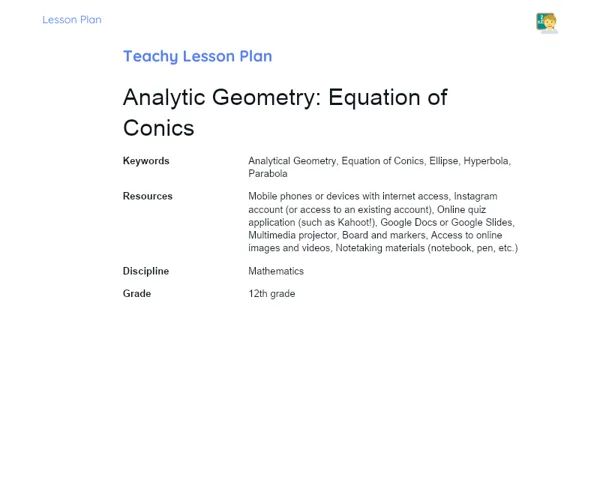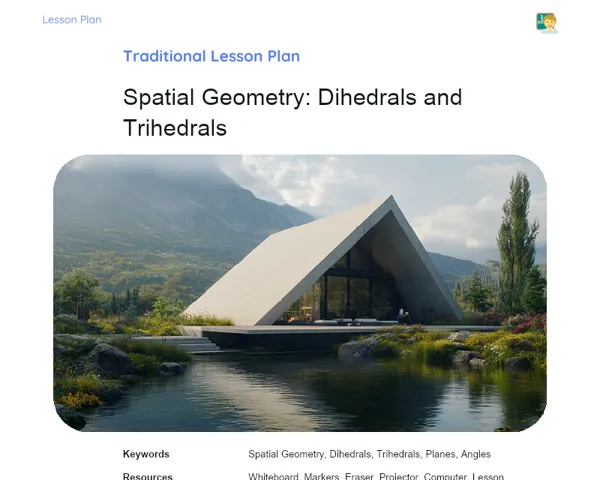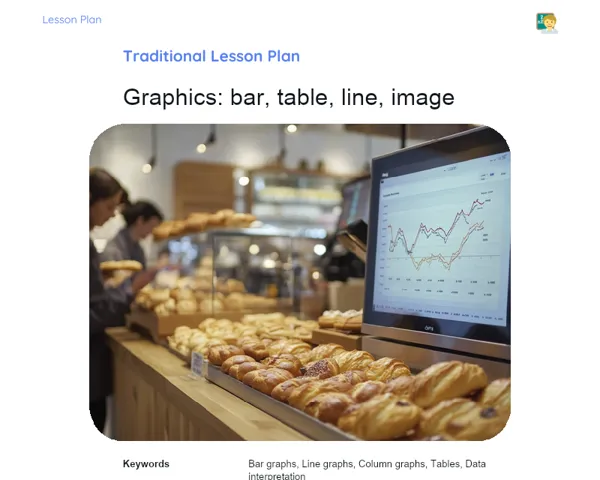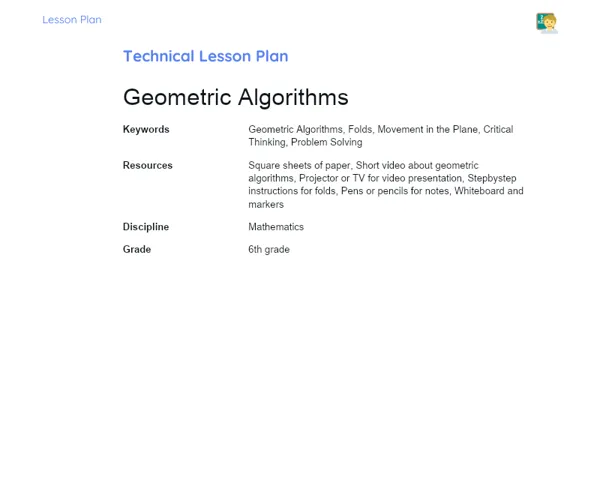Lesson Plan Teknis | Side, Radius and Apothem of Inscribed and Circumscribed Polygons
| Palavras Chave | Inscribed Polygons, Circumscribed Polygons, Geometric Relationships, Side, Apothem, Radius, Triangles, Squares, Hexagons, Geometric Construction, Engineering, Architecture, Design, Practical Activities, Job Market |
| Materiais Necessários | Paper, Ruler, Compass, Scissors, Brief video on applications of polygons, Calculator |
Objective
Duration: 10 - 15 minutes
The aim of this stage is to give students a strong grasp of the geometric relationships between sides, apothems, and radii of polygons that are inscribed or circumscribed around circles. This knowledge is vital for acquiring practical skills that can be directly used in industries like engineering, architecture, and design, where geometry plays a key role. Linking these concepts to the job market enhances their significance by demonstrating their relevance in everyday contexts.
Objective Utama:
1. Understand the geometric relationships between sides, apothems, and radii of triangles, squares, and hexagons inscribed in or circumscribed around a circle.
2. Apply geometric principles to solve real-world problems involving polygons and circles.
Objective Sampingan:
- Enhance spatial awareness and logical reasoning abilities.
- Encourage teamwork through group activities.
Introduction
Duration: 10 - 15 minutes
The goal of this phase is to help students grasp the topic's relevance by connecting it to real-world applications while piquing their interest through an interactive exercise. This lays the groundwork for deeper engagement with the geometric concepts addressed later in the session.
Curiosities and Market Connection
Did you know many architectural designs, such as domes and towers, utilize inscribed or circumscribed polygons to optimise space and manage weight distribution? In the job market, engineers and architects often implement these concepts to design structures ranging from bridges to skyscrapers. Understanding these geometric relationships is also essential in fields like game design, where shapes and spatial awareness can directly impact gameplay and the visual appeal of virtual environments.
Contextualization
Picture yourself designing an amusement park where you need to figure out the area of various circular attractions and how different geometric shapes like triangles, squares, and hexagons fit in them. Grasping the relationships between the sides, apothems, and radii of these polygons and the surrounding circle is crucial for accurately calculating the area for each attraction, ensuring a well-structured and safe design.
Initial Activity
To kick things off, play a short video lasting around 3 minutes that showcases various applications of inscribed and circumscribed polygons in engineering—think along the lines of geodesic dome construction. After the video, pose a thought-provoking question: 'How do you reckon these shapes contribute to making structures more robust and efficient?' Allow the students to bounce ideas around in pairs for 2 minutes before sharing insights with the larger group.
Development
Duration: 55 - 60 minutes
The focus of this phase is to deepen students' understanding of geometric relationships in inscribed and circumscribed polygons through practical tasks and reflective activities. This ensures that students not only grasp theoretical concepts but also know how to apply them in real-life situations, developing essential measurement skills relevant across various industries.
Topics
1. Defining inscribed and circumscribed polygons
2. Examining relationships between sides, apothems, and radii in triangles, squares, and hexagons
3. Measuring sides, apothems, and radii
4. Applying these concepts to solve real-world challenges
Thoughts on the Subject
Encourage a discussion on how understanding the geometric relationships between sides, apothems, and radii is critical in engineering and architectural projects. Ask students to consider how these relationships might affect the strength and effectiveness of various structures. Guide the class in identifying everyday instances where these relationships are apparent, such as in mosaics, flooring, and product designs.
Mini Challenge
Constructing Polygons and Exploring Relationships
Students will create physical models of triangles, squares, and hexagons inscribed and circumscribed within circles using basic materials like paper, rulers, and compasses. They will take measurements of the sides, apothems, and radii and explore the relationships between these measurements.
1. Split the class into groups of 3 to 4 students.
2. Equip each group with paper, a ruler, a compass, and scissors.
3. Instruct students to draw a circle with a radius of 10 cm on the paper.
4. Guide them to include an inscribed equilateral triangle, a square, and a hexagon within the circle.
5. Next, have them draw a triangle, square, and hexagon that are circumscribed around the same circle.
6. Each group must record the measurements of sides, apothems, and radii for both the inscribed and circumscribed polygons.
7. They should compare and discuss the relationships they discover between the measures.
Cultivate practical skills in geometric construction and measurement, alongside a deeper understanding of the geometric relationships present in inscribed and circumscribed polygons.
**Duration: 35 - 40 minutes
Evaluation Exercises
1. Calculate the apothem of an inscribed equilateral triangle in a circle with a 5 cm radius.
2. Determine the side length of a square circumscribed around a circle with an 8 cm radius.
3. Find the radius of a circle circumscribing a regular hexagon with a side length of 6 cm.
4. Discuss how the apothem of a regular hexagon inscribed in a circle can be used to find the area of that hexagon.
Conclusion
Duration: 10 - 15 minutes
The aim of this stage is to consolidate the knowledge acquired by students, creating an opportunity for reflection on the practical significance of the concepts learned and their real-world applications. This ensures that students comprehend not only the theoretical content but also how to apply it in a practical, reflective manner in their daily lives and future careers.
Discussion
Facilitate an open conversation regarding the concepts covered, inviting students to reflect on their practical challenge, the fixation exercises, and potential applications of their newfound knowledge. Encourage students to explore how the geometric relationships between sides, apothems, and radii can be recognized in their everyday lives and within different careers. Prompt them to share real or imagined examples—think engineering projects, architectural designs, product development, and even game and digital simulations.
Summary
Recap the key takeaways from the lesson: definitions of inscribed and circumscribed polygons, the relationships between sides, apothems, and radii in triangles, squares, and hexagons, as well as how to calculate these measurements. Stress the importance of understanding these relationships to tackle real-life problems and enhance design projects across various fields.
Closing
Explain how the lesson bridged the gap between geometric theory and practical application through the construction of physical models and analysis of measurements. Emphasize that mastering these geometric relationships is vital for many sectors, from engineering and architecture to product development and digital gaming. Highlight the necessity of continuing to build these practical skills and logical thinking to confidently address future challenges.



